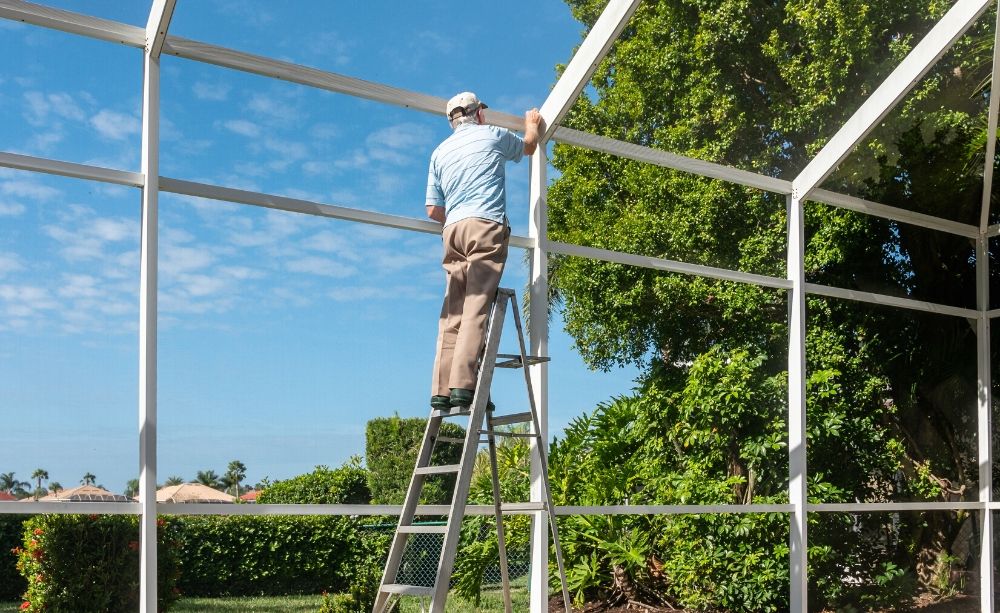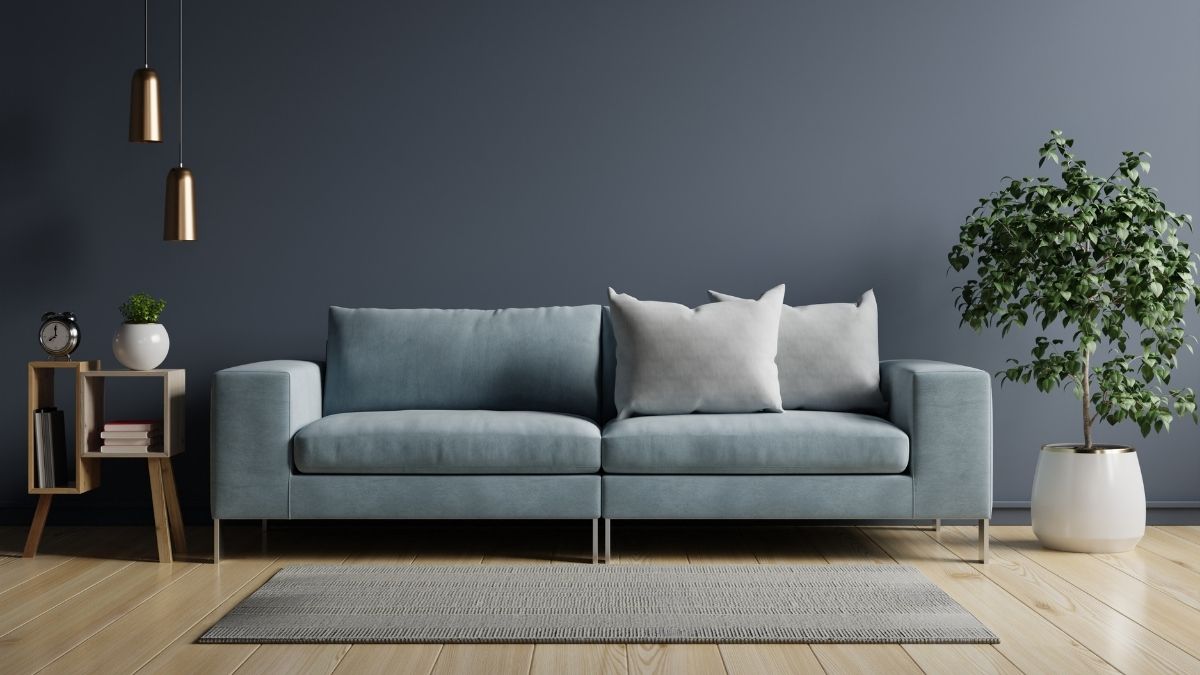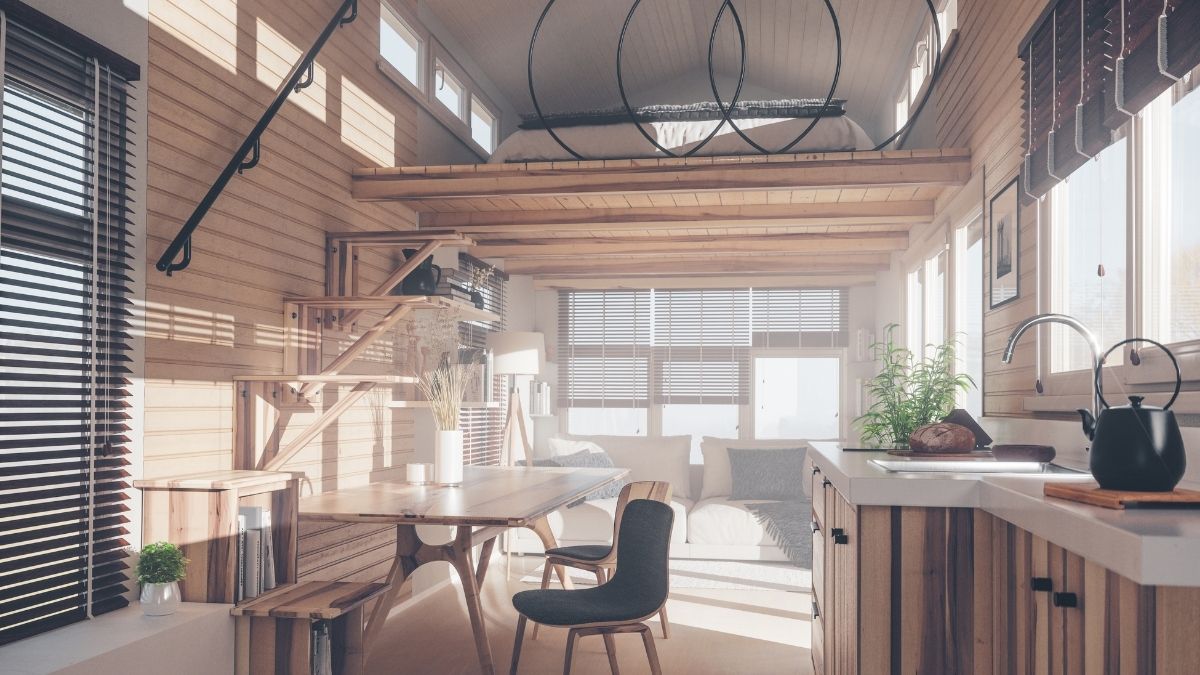Use Glass Walls and Doors
“Blurring the lines” between areas inside the house and those immediately outside is a strategy that makes the home look bigger and brings the best of the outside in. Sliding patio doors, doors that swing in either direction (into the house or toward the outside), and even pocket doors that disappear into the wall are good options. Some homes use walls that open entirely, completely eliminating the barrier between indoor and outdoor spaces.
Wrap Windows Around Corners
Take advantage of great views from your home by using corner windows. These enhance lovely views of water and woods by minimizing barriers to a broad vista. This feature works as well for garden and backyard views as well as splendid bay vistas.
Create Private Outdoor Spaces
One of the more daring ways to create a seamless indoor-outdoor transition is to extend a master bedroom with an outdoor bath or shower on an adjacent patio or deck. Enclose the space with courtyard-style walls. Use a glass roof or pergola that’s sheltered with greenery for privacy that still allows you to enjoy the beauty of trees and sky.
Build Enclosures for Pool and Patios
Enclosures extend living spaces outdoors. Pool enclosures enhance security and keep insects and wildlife out. Work with a professional to design an enclosure that extends the roof line of your home, providing direct access between the house and the enclosure. Ensure enough ventilation and sun protection to make both areas comfortable for most of the year.
Use Similar Flooring and Décor
Bring the indoors outside by using the same flooring material for the outdoor area as in the connecting indoor area. The connecting indoor area can be laid with materials such as garden stepping stones, concrete, tile, and weather-resistant wood. These materials tend to flow directly from one space to the other, creating a seamless indoor-outdoor transition. Keep floors on the same level, and eliminate thick thresholds or other tripping hazards. However, be sure to consider drainage so that, when the rain comes, and the doors are closed, water can’t come into the house.
Furnishings should complement the two environments, making them appear more like a single, seamless space. Use similar plants, seating, and tables to create an outdoor “room” that looks like part of the living space next to it.














 Deering Estate
Deering Estate
 Massage Envy South Miami
Massage Envy South Miami
 Calla Blow Dry
Calla Blow Dry
 My Derma Clinic
My Derma Clinic
 Sushi Maki
Sushi Maki
 Sports Grill
Sports Grill
 The Healthy Kitchen
The Healthy Kitchen
 Golden Rule Seafood
Golden Rule Seafood
 Malanga Cuban Café
Malanga Cuban Café

 Kathleen Ballard
Kathleen Ballard
 Panter, Panter & Sampedro
Panter, Panter & Sampedro
 Vintage Liquors
Vintage Liquors
 The Dog from Ipanema
The Dog from Ipanema
 Rubinstein Family Chiropractic
Rubinstein Family Chiropractic
 Your Pet’s Best
Your Pet’s Best
 Indigo Republic
Indigo Republic




 ATR Luxury Homes
ATR Luxury Homes


 2112 Design Studio
2112 Design Studio
 Hamilton Fox & Company
Hamilton Fox & Company
 Creative Design Services
Creative Design Services
 Best Pest Professionals
Best Pest Professionals
 HD Tree Services
HD Tree Services
 Trinity Air Conditioning Company
Trinity Air Conditioning Company
 Cisca Construction & Development
Cisca Construction & Development
 Mosquito Joe
Mosquito Joe
 Cutler Bay Solar Solutions
Cutler Bay Solar Solutions


 Miami Royal Ballet & Dance
Miami Royal Ballet & Dance
 Christopher Columbus
Christopher Columbus
 Pineview Preschools
Pineview Preschools
 Westminster
Westminster
 Carrollton
Carrollton
 Lil’ Jungle
Lil’ Jungle
 Frost Science Museum
Frost Science Museum
 Palmer Trinity School
Palmer Trinity School
 South Florida Music
South Florida Music
 Pinecrest Orthodontics
Pinecrest Orthodontics
 Dr. Bob Pediatric Dentist
Dr. Bob Pediatric Dentist
 d.pediatrics
d.pediatrics
 South Miami Women’s Health
South Miami Women’s Health

 The Spot Barbershop
The Spot Barbershop
 My Derma Clinic
My Derma Clinic




 Miami Dance Project
Miami Dance Project

 Rubinstein Family Chiropractic
Rubinstein Family Chiropractic
 Indigo Republic
Indigo Republic

 Safes Universe
Safes Universe
 Vintage Liquors
Vintage Liquors
 Evenings Delight
Evenings Delight





 Atchana’s Homegrown Thai
Atchana’s Homegrown Thai
 Baptist Health South Florida
Baptist Health South Florida

 Laser Eye Center of Miami
Laser Eye Center of Miami
 Visiting Angels
Visiting Angels
 OpusCare of South Florida
OpusCare of South Florida

 Your Pet’s Best
Your Pet’s Best





 HD Tree Services
HD Tree Services
 Hamilton Fox & Company
Hamilton Fox & Company


 Creative Design Services
Creative Design Services